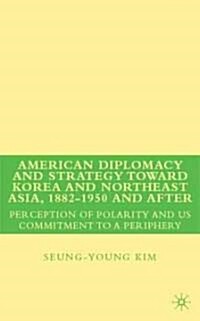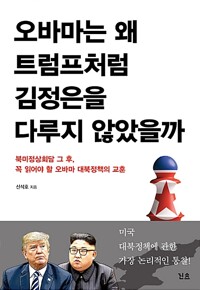
American diplomacy and strategy toward Korea and Northeast Asia, 1882-1950 and after: perception of polarity and us commitment to a periphery
- 개인저자
- Seung-young Kim
- 발행사항
- New York : Palgrave, 2009
- 형태사항
- xii, 287 p. ; 24cm
- ISBN
- 9781403975454
- 청구기호
- 349.42011 K49a
- 서지주기
- Includes bibliographical references (p. 219-274) and index
소장정보
| 위치 | 등록번호 | 청구기호 / 출력 | 상태 | 반납예정일 |
|---|---|---|---|---|
이용 가능 (2) | ||||
| 1자료실 | 00012786 | 대출가능 | - | |
| 1자료실 | 00015955 | 대출가능 | - | |
- 등록번호
- 00012786
- 상태/반납예정일
- 대출가능
- -
- 위치/청구기호(출력)
- 1자료실
- 등록번호
- 00015955
- 상태/반납예정일
- 대출가능
- -
- 위치/청구기호(출력)
- 1자료실
책 소개
This book examines how and why American commitment toward Korea changed during the three US presidencies of Theodore Roosevelt, Franklin D. Roosevelt, and Harry S. Truman. While focusing on the statesmen’s perceptions of strategic situation as main locus of analysis, it reconstructs the process of assessment, decision-making, and diplomatic negotiations. This book demonstrates that the US policies toward Korea were shaped by the US decision-makers’ broader concerns about great power relations in East Asia and the world, rather than their immediate concerns about the development in the Korean peninsula. This realist explanation of history sets forth clear and timely terms of debate about the current changes in the US-South Korean alliance as well. By showing the dramatic unfolding of US occupation, withdrawal, and intervention in the Korean peninsula, this book also sheds light on the broader issue of US military occupations of other countries in the twentieth first century.
목차
Abbreviations List of Tables Acknowledgement Introduction Sources of US Commitment toward Korea PART I: US DIPLOMACY TOWARD KOREA IN THE ERA OF THE RUSSO-JAPANESE WAR The Rise of Korean Expectation and Decline of US Commitment to Korea, 1882-1901 Great Power Rivalry and US Assessment at the Outbreak of the War US Diplomacy and the Japanese Imposition of Protectorate on Korea PART II: US DIPLOMACY TOWARD KOREA DURING WORLD WAR II Vision of Cooperation among the Allies and the Four- Power Trusteeship Plan for Korea Emergence of the Bi-Polar Perception and a Missed Opportunity for Diplomacy Consolidation of the Bi-Polar Perception and US Suggestion of the Thirty-Eighth Parallel PART III: US POLICY TOWARD KOREA FROM 1945 TO JUNE 1950 Uncertain Strategic Situation and Rise of Competing Recommendations toward Korea The Re-emergence of a Multipolar Vision and the Decision for Withdrawal from Korea The Erosion of Multipolar Perception and the Road to Intervention Conclusion: US Commitment toward South Korea since 1950

